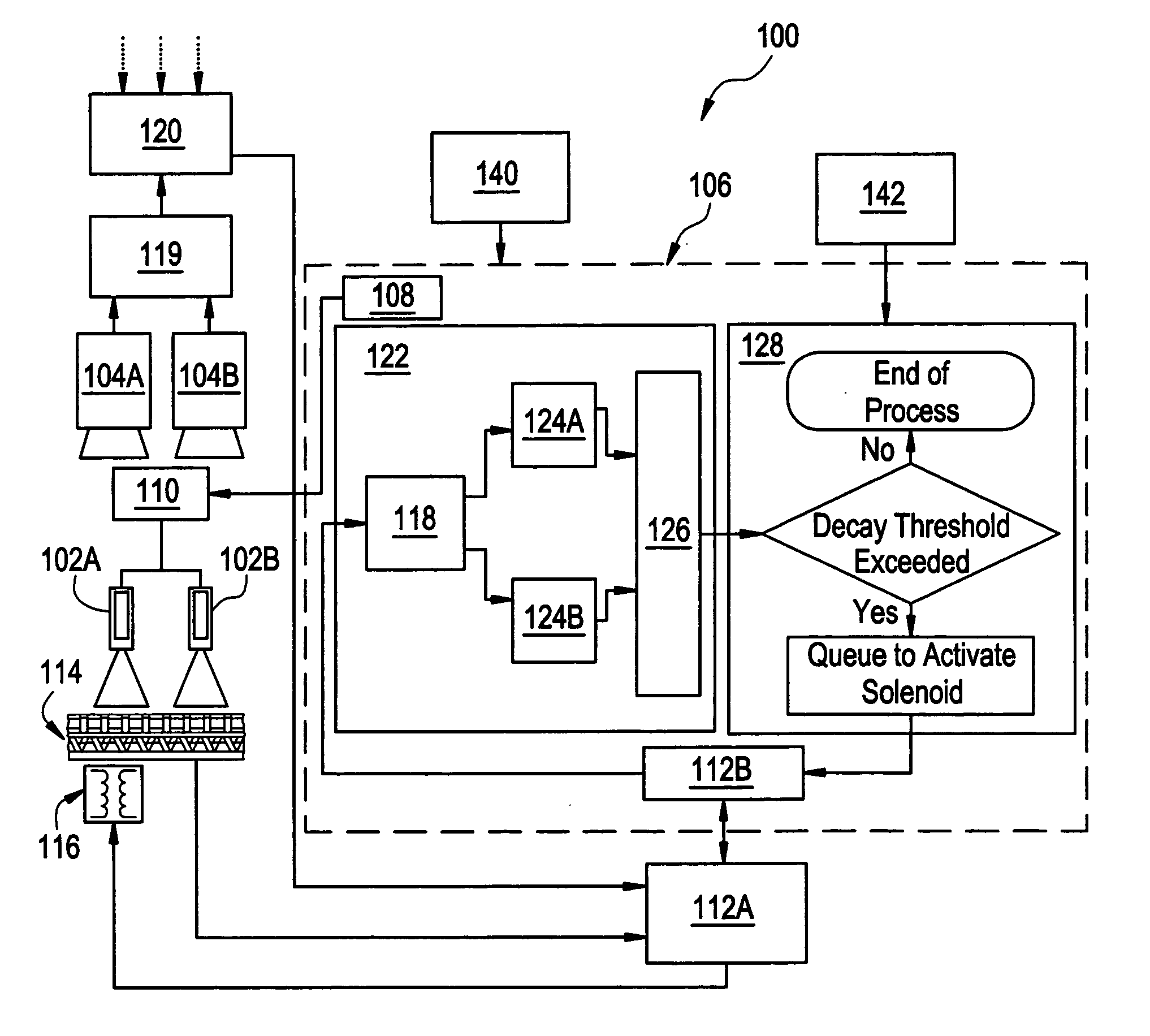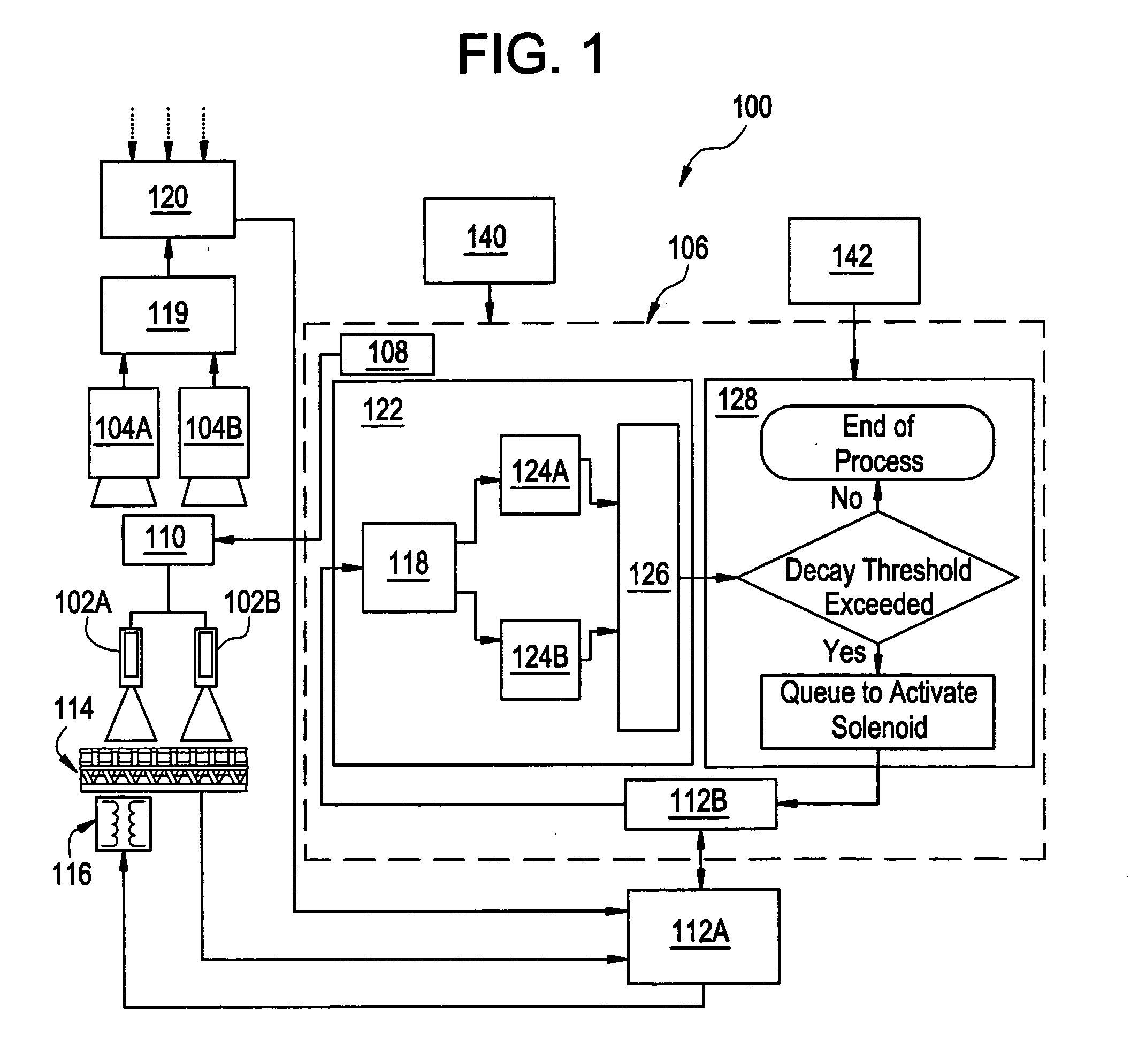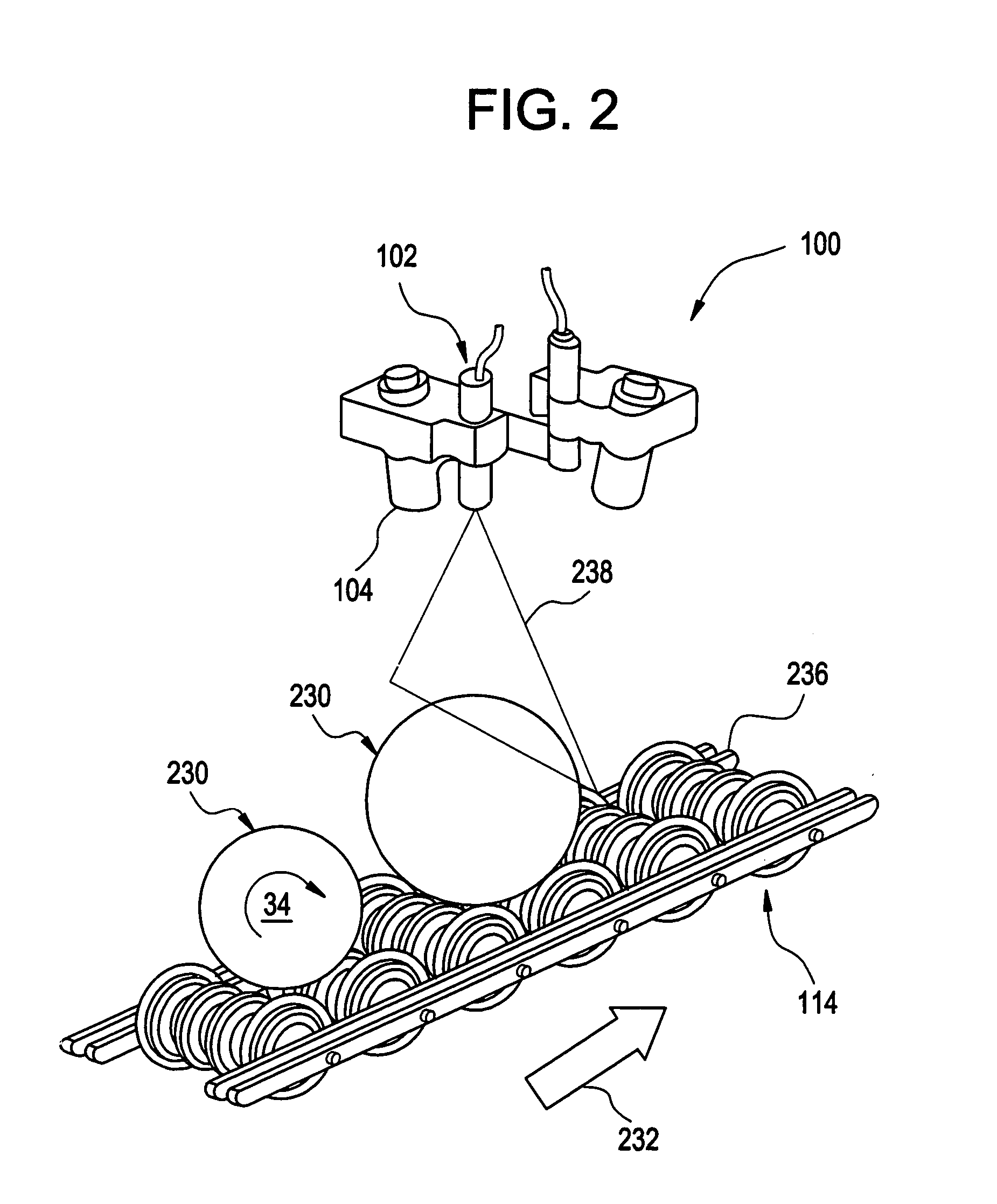Method and apparatus for detecting damage in plant products
a plant product and damage detection technology, applied in the direction of instruments, nuclear engineering, optical radiation measurement, etc., can solve the problems of high cost of plant product decay, unhealthy and unattractive, and the ability of plant products to deteriora
- Summary
- Abstract
- Description
- Claims
- Application Information
AI Technical Summary
Benefits of technology
Problems solved by technology
Method used
Image
Examples
Embodiment Construction
[0015] A preferred embodiment of the present invention provides a method and apparatus for detecting damage to plant products and sorting the plant products based on the damage determination. The plant product may be any suitable non-citrus fruit, vegetable, legume, citrus fruit, or the like, but will be generally described herein as a “plant product”. FIG. 1 depicts an inspection system 100 according to an embodiment of the present invention. The inspection system 100 includes at least one beam emitter 102 and at least one beam detector 104. The embodiment shown in FIG. 1 includes two beam emitters 102A, 102B and two beam detectors 104A, 104B, but any suitable number of beam emitters 102 or beam detectors 104 may be used with the present invention. Moreover, the beam emitters 102 and beam detectors 104 need not be provided in matched pairs as shown in FIG. 1. For example, a single beam emitter 102 could bathe a target area, or inspection site, with a broad beam and multiple beam de...
PUM
| Property | Measurement | Unit |
|---|---|---|
| wavelength | aaaaa | aaaaa |
| time | aaaaa | aaaaa |
| single wavelength | aaaaa | aaaaa |
Abstract
Description
Claims
Application Information
 Login to View More
Login to View More - R&D
- Intellectual Property
- Life Sciences
- Materials
- Tech Scout
- Unparalleled Data Quality
- Higher Quality Content
- 60% Fewer Hallucinations
Browse by: Latest US Patents, China's latest patents, Technical Efficacy Thesaurus, Application Domain, Technology Topic, Popular Technical Reports.
© 2025 PatSnap. All rights reserved.Legal|Privacy policy|Modern Slavery Act Transparency Statement|Sitemap|About US| Contact US: help@patsnap.com



